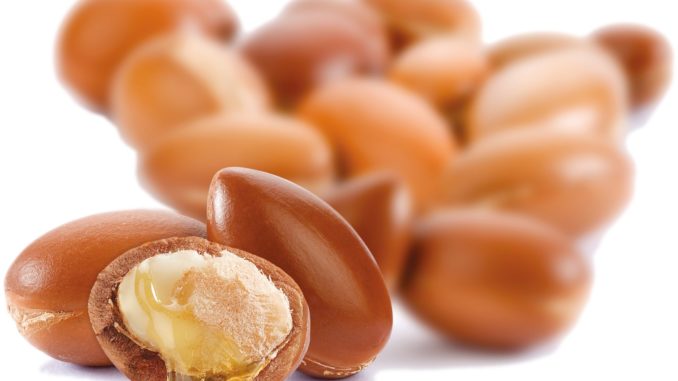
What does ethical mean to you? To many consumers, this oft-used term is a generic catch phrase for products and technologies that are deemed sustainable, itself a common phrase, that are made with minimal exploitation of humans, animals or the environment.
Argan oil is an oil extracted from the argania tree of Morocco, prized for its cosmetic, therapeutic and medicinal properties. Argan oil is a multi-player in the natural skin care industry, and is used to treat a variety of ailments, including acne, wrinkles, dry skin, psoriasis and eczema. Additionally, argan makes an effective hair conditioner and is a common treatment to strengthen finger nails.
And yet, beyond its many uses, the production of argan oil and how it ends up in your bathroom cabinet makes an interesting story unto itself.
How it’s Made
Argan oil has been used for at least 3,500 years in what is today Morocco. In ancient times, the argania tree, from which it derives, covered much of North Africa, and the Berber people developed a process to extract argan that changed little until the 20th century.
To extract argan, the Berber women would collect the ripe argan fruit from the base of the tree, and peel back the layers and collect the valuable pits within. Next they would grind the pits between two stones to extract the fruit kernels from the pits.
If the argan was to be used for cooking, the women would roast the kernels to enhance the flavor of the oil (argan for cosmetic use often skips this step), which they would grind in a stone quern to produce an oily paste.
Until recently, Berber women would typically kneed the paste to extract the oil, and would then decant and filter the oil to remove impurities. But in the early 1990s, the European cosmetics industry noted the high antioxidant content of argan and its many beauty and skin applications, automated the extraction process and set up factories in Casablanca that monopolized production.
Argan Oil and Fair Trade Production
The growth in popularity for argan oil as a cosmetic treatment in the late 20th century shifted production from the Berber women and traditional extraction methods to modern factories, hundreds of miles from the arganeraie region. And with this shift, a loss of quality control, to say nothing about the lost benefits of argan oil to the Berber peoples who performed the process over thousands of years.
Around this time, a study by the German Government Development Agency (GTZ) chronicled the plight facing the Berber women, often portrayed by major argan oil producers as having a large role in and benefiting from argan production, when in reality, the women received little benefit from surging argan sales, and the product became diluted in the process.
In 1995, the German Federal Ministry for Economic Cooperation and Development and the GTZ outlined a strategy with Moroccan authorities to shift argan oil production back to Berber women in a series of fair trade cooperatives with competitive wages, flexible working conditions, health and education opportunities for the women and their families.
Read also:
Skinception ™ Argan Oil.
Take a deep breath when you read this: there are over 10,000 industrial chemicals in common skin care products. The average American adult is exposed to 168 hazardous chemicals each day. And everything applied to the skin, be it lip stick or deodorant, sun block or general skin care products are absorbed by the body, just like they’d been eaten.
In addition, another objective was to develop a sustainable production process, in which the argan tree was protected, and the region designated a nature reserve, to prevent further degradation of the relatively small growing area.
As a result, UNESCO designated the arganeraie region as a protected biosphere in 1998. And much production of argan oil, through trial and error, has shifted back to Berber women, now active in these co-ops that provide economic protection and benefits to the traditional makers of this rare oil.
How You Can Help
Be aware that some of the larger skin care manufacturers dilute argan oil with preservatives that degrade the product of its antioxidant content. This not only makes it less effective as a cosmetic treatment, it’s not unlikely that production of these argan treatments are made in factories in Casablanca, with little benefit to the Berber women and their families.
In that light, and to increase the likelihood that the argan oil you’ve purchased was produced ethically, by Berber woman, it’s advisable to purchase argan oil in its pure form, undiluted, without additives or preservatives.
Buy cosmetic argan oil from small or mid-sized skin care companies. Yes, they may be more expensive than products from the big labels, but if it’s undiluted, and it’s not one of the large brands, it’s more likely that the product was made by the knowledgeable Berber women, in a fair trade co-op, with the economic benefits to reflect that endeavour.
As a suggestion, you might try Skinception Cold-Pressed Cosmetic Argan Oil, which meets the prerequisites listed above, and which offers the cosmetic benefits of this revered oil product with the promise that it was made ethically, by the Berber women, in a fair trade co-op.
Read also:
The Many Uses of Skinception Cold Pressed Cosmetic Argan Oil.
Skin care can be expensive. After all, to look young you need a wrinkle cream and a stretch mark product. You might use an eye cream, and you certainly need a moisturizer.

Leave a Reply